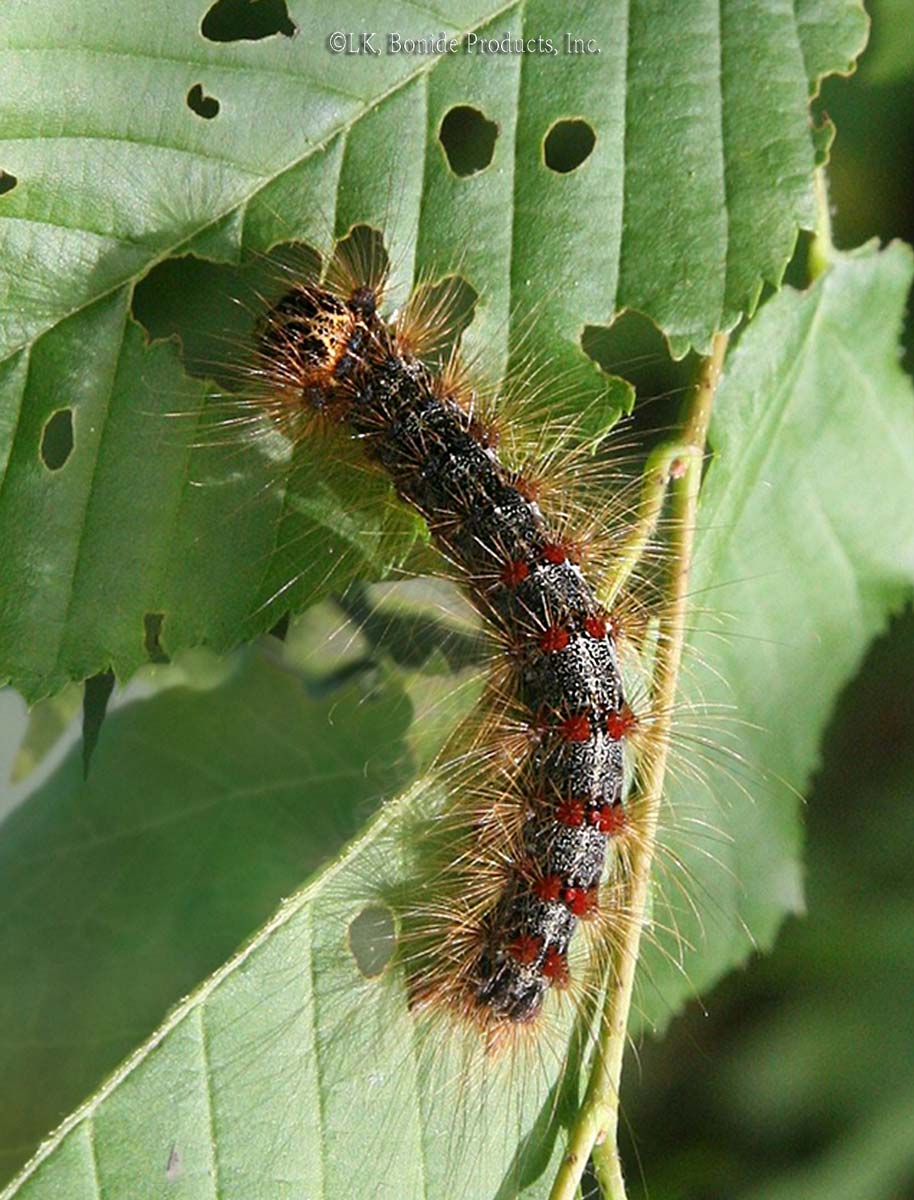
Since its accidental release in Massachusetts in 1869, this pest has defoliated millions of acres of trees in the East. A notorious hitchhiker (hence the name “gypsy”), it’s gradually moving westward, traveling to new regions as egg masses attached to vehicles. An Asian strain which feeds on an even wider range of plants than the European type has shown up in the Western United States.
Newly hatched caterpillars can disperse by hang gliding on silken strands. Eventually growing up to 2 inches long, they’re marked with rows of blue and red spots; tufts of fine hairs protrude from their sides. They feed in such numbers that their excrement rains upon the ground.
Target: Many shrubs and trees, especially oaks.
Damage: Leaves are eaten. Deciduous trees are only weakened, but defoliated evergreens may die. Damage is more severe when a warm spring follows a dry autumn.
Life cycle: Large tan moths lay chamois like egg masses on any rough surface; the eggs overwinter and hatch in spring. The caterpillars climb host trees and feed on leaf undersides, then crawl down to form mahogany-brown pupae in bark crevices and on other surfaces. The moths soon emerge, mate, and die. There is one generation a year.
Notes: Some people are allergic to gypsy-moth caterpillar hairs, so wear gloves when removing the pests from burlap or sticky bands. Gypsy moths build up to huge numbers every 5 to 10 years, but their numbers are then reduced by a fungal or viral disease.











